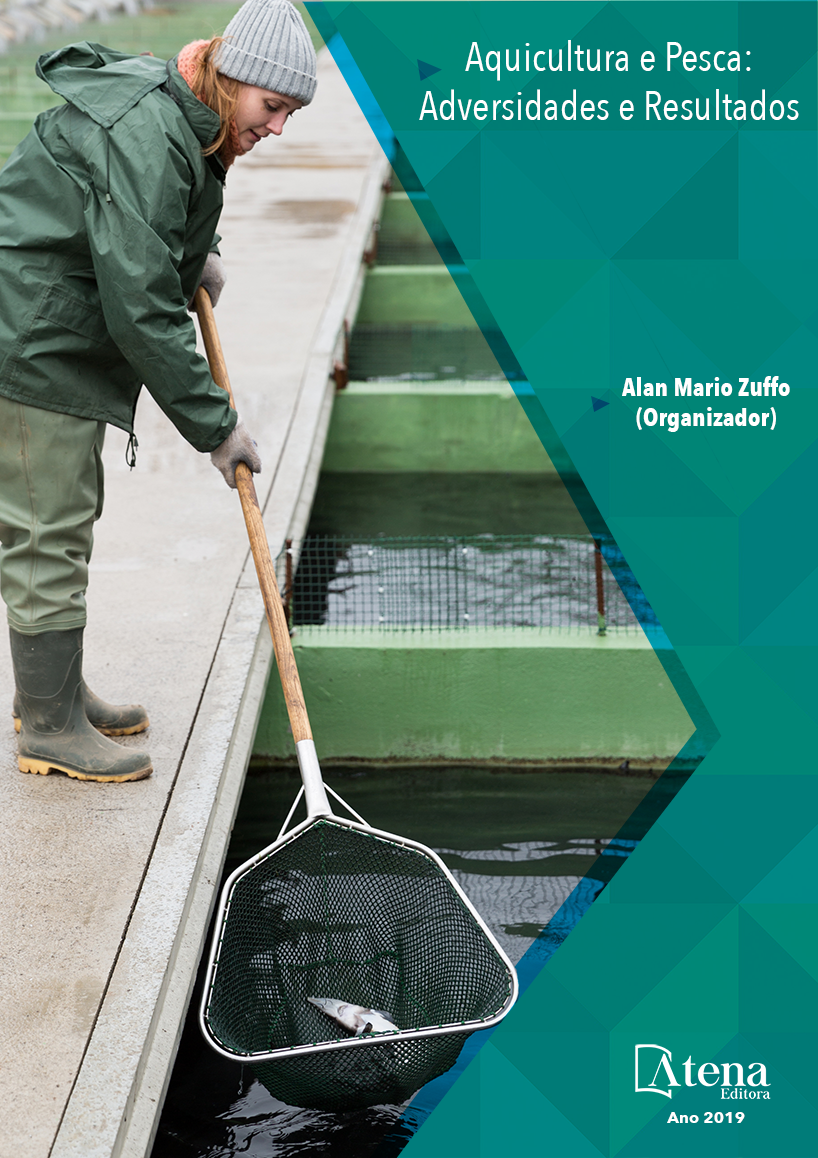
CARACTERIZAÇÃO DA ICTIOFAUNA ASSOCIADA À PESCA DO CAMARÃO-SETE-BARBAS (Xiphopenaeus kroyeri) NA PRAIA DO PEREQUÊ, GUARUJÁ-SP
A partir da década de 1960 a pesca
de arrasto dirigida aos camarões no litoral de
São Paulo está entre as mais importantes para
a economia pesqueira do sudeste e sul do
Brasil. O camarão sete-barbas (Xiphopenaeus
kroyeri) é uma das principais espécies de
valor econômico e social, no entanto, esse
tipo de pesca gera grande quantidade de
fauna acompanhante. Este trabalho objetiva
avaliar a biomassa referente à ictiofauna.
Foram realizados quatro cruzeiros de pesquisa
(setembro/2015, janeiro/2016 e fevereiro/2016)
na região entre a praia do Perequê e a Ilha
da Moela, Guarujá/SP, com a utilização da
embarcação de pequeno porte, “Gabriela Xl”.
Da fauna encontrada nos arrastos, a ictiofauna
se destaca em peso e quantidade dos demais
grupos, com média de 39%, coincidindo
com os dados apresentados em literatura.
O lixo (material orgânico, plástico, metal e
outros) obteve uma proporção no volume total
capturado, com média encontrada de 3,5%,
apresentando claramente uma elevada poluição
obtida de uma região de provável reprodução
para diversas espécies. A fauna acompanhante
apresentou maior diversidade de espécies de
peixes, seguido pelos crustáceos. Sendo que as
principais espécies de peixes, em número foram:
cangoá ou canganguá, Stellifer brasiliensis,
tortinha, Isopisthus parvipinnis e maria-luiza,
Paralonchurus brasiliensis. Na carcinofauna,
as mais abundantes foram caranguejo-baú,
Hepatus pudibundus e siri-azul, Calinectes
ornatus e no grupo dos moluscos, concha
Olivancilaria urceus.
CARACTERIZAÇÃO DA ICTIOFAUNA ASSOCIADA À PESCA DO CAMARÃO-SETE-BARBAS (Xiphopenaeus kroyeri) NA PRAIA DO PEREQUÊ, GUARUJÁ-SP
-
DOI: 10.22533/at.ed.2721929037
-
Palavras-chave: arrasto de camarão, peixes, fauna acompanhante.
-
Keywords: shrimp trawling, fish, bycatch
-
Abstract:
From the 1960s, trawling directed
at shrimp trows in the coast of São Paulo
is among the most important for the fishing
economy of Southern Brazil. The bobshrimp
(Xiphopenaeus kroyeri) is one of the main
species of economic and social value, however,
this type of fishing generates a large amount
of bycatch. This work aims to evaluate the
biomass of the ichthyofauna. Four research
cruises (September\2015, January\2016 and
February\2016) were conducted in the region between Perequê beach and Ilha da
Moela, Guarujá/SP, with the use of the small vessel, “Gabriela Xl”. Of the fauna found
in the trawls, the ichthyofauna stands out in weight and quantity of the other groups,
with a mean of 39%, coinciding with the data presented in the literature. Garbage
(organic material, plastic, metal and others) obtained a proportion in the total volume
captured, with an average found of 3.5%, clearly showing a high pollution obtained from
a region of probable reproduction for several species. The companion fauna presented
a greater diversity of fish species, followed by crustaceans. The main fish species
in number were the following: cangoa or cangangua, Stellifer brasiliensis, tortinha,
Isopisthus parvipinnis and maria-luisa, Paralonchurus brasiliensis. In the carcinofauna,
the most abundant were crab, Hepatus pudibundus and blue-crab, Calinectes ornatus
and in the group of shell molluscs, Olivancilaria urceus.
-
Número de páginas: 15
- Lays Gabriela Cardoso
- Júlia Ferreira dos Santos Domingos
- Jorge Luís dos Santos
- Alberto Ferreira de Amorim


